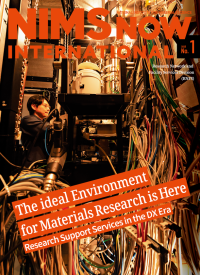Extreme Environment Materials Data Unit
Our unit is engaged in the following two important research activities.
We acquire characteristic data for the safe and efficient use of various structural materials. We aim to disseminate this data in the form of structural materials data sheets and to build a technological foundation to raise the level of industrial competitiveness in Japan.
(3) Materials for Extreme Environments Data Sheet(successor to the Space Use Materials Strength Data Sheet (https://sds.nims.go.jp))
Based on the R&D and social implementation plan for hydrogen formulated by the Ministry of Economy, Trade and Industry (METI), NIMS proposed an issue to the “Establishment of a Large-Scale Hydrogen Supply Chain” project, which is one of a GI Fund project promoted by NEDO, and the proposal was adopted in FY2021. This project aims to establish test facilities to evaluate mechanical properties under cryogenic hydrogen environment, construct a materials database using the facilities, and promote its utilization in order to contribute to the review of regulations on materials for liquefied hydrogen-related equipment and to strengthen technological development capabilities.
1. Structural Materials Data Sheet Project
Fatigue Data Sheet (https://fds.nims.go.jp)
We started to prepare these data sheets in 1975 for the purpose of providing reference fatigue properties of domestically produced materials. Currently, we are evaluating the standard fatigue properties of materials at room temperature and in the atmosphere. Long-term fatigue is the main issue, and we have obtained data up to 1010 cycles. The test facilities used are as follows
- Multi-rotating bending fatigue testing machine (normal test)
36 test pieces can be tested concurrently. It takes 3 years at 100 Hz up to 1010 cycles. - Ultrasonic fatigue testing machine (accelerated testing)
Reach 1010 cycles at 20 kHz in a week.
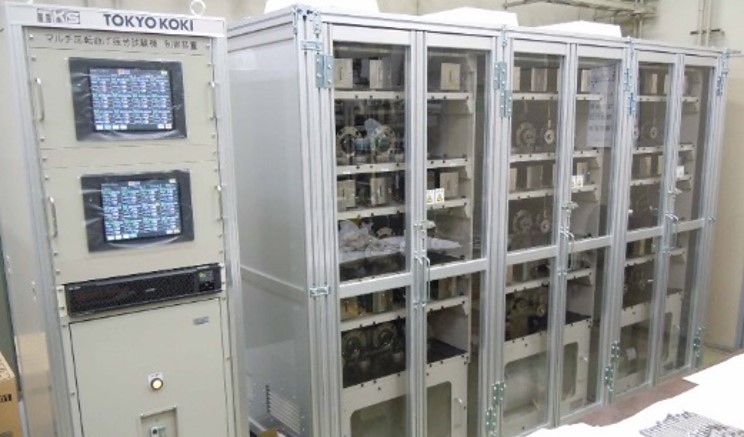 |
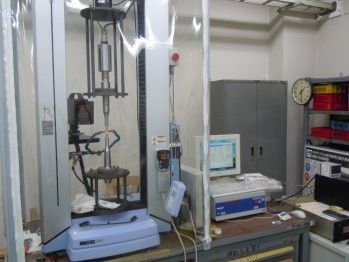 |
| Multi-rotating bending fatigue testing machine | Ultrasonic fatigue testing machine *Standardization of ultrasonic fatigue testing methods (2017) (Japan Welding Engineering Society Standard WES 1112) |
In the past, we also evaluated fatigue properties of welded joints and high-temperature fatigue properties, but these have been suspended since 2012.
Over the past 48 years, we have published 136 data sheets covering more than 40 steels and typical non-ferrous metallic materials.
Related files and links
- 2024.09.12 News New fatigue data sheets (Nos. 134, 135, 136) have been published.
- 2023.03.22 Issue NIMS NOW International Vol.21 No.2 <2023 March-April>
Research Digest 2022, 05 Metallic fracture mechanisms uncovered ending a 50-year mystery - 2020.12.11 Issue NIMS NOW International Vol.18 No.5 <2020 September-October>
Why Did It Break?
Corrosion Data Sheet (https://cods.nims.go.jp)
This data sheet was started in 1997 when an atmospheric exposure test site was established in the Research on Long Life of Structural Materials, which was a part of the Ultra-Steel Project. Currently, seven data sheets have been published (https://dsc.nims.go.jp/).
The objective is to systematically clarify the standard atmospheric corrosion properties of various metallic materials and iron-based alloy materials that serve as guidelines to develop new corrosion-resistant materials. Atmospheric exposure tests are conducted in accordance with the standard test methods specified in the Japanese Industrial Standards.
Corrosion tests are conducted not only in the Tsukuba area, but also in coastal areas at the same time. We have reported that the corrosion of materials in a shielding environment where there is no washing away of deposited salt by rain and other factors in the coastal area becomes very serious. These results are also used in the design of highly corrosion resistant materials.
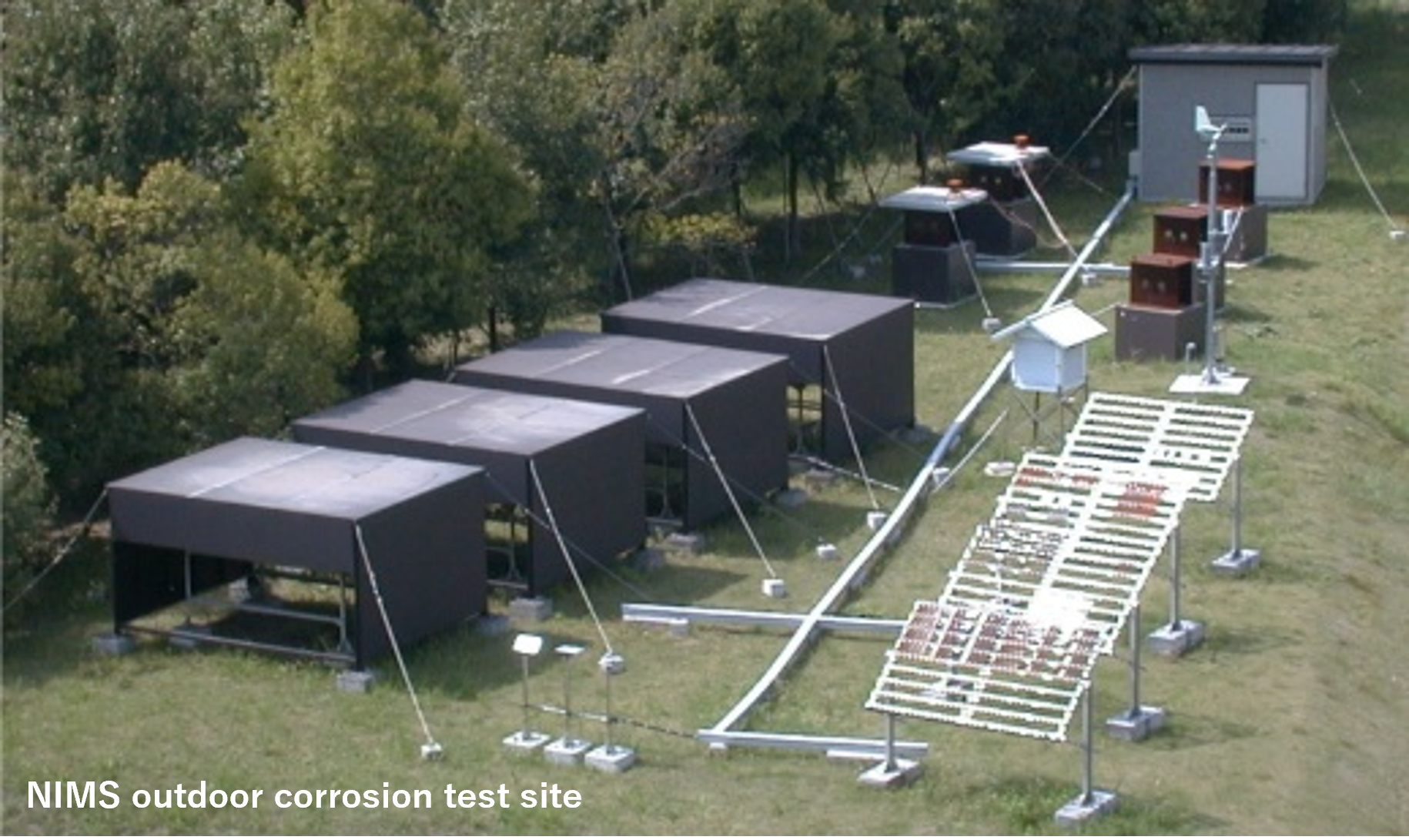

|
Shielded exposure test
The specimens are mounted on a horizontal trestle under a shielded structure in this exposure tests to avoid the direct effects of rainfall and sunlight. The structure is designed to allow wind blow through in the north-south direction. In areas affected by airborne sea salt, sea salt accumulates on the specimen surface, creating a very severe corrosive environment.
|
Ordinary exposure test
The specimens are set on a trestle tilted at a 45° angle to the south in this exposure tests and are directly affected by factors such as rain, wind and sunlight under the natural environment. |
Related files and links
Material Data Sheet for Extreme Conditions (successor to Space Use Materials Strength Data Sheet (https://sds.nims.go.jp))
NIMS has developed and proposed a method of material characterization under high-pressure hydrogen environment using hollow specimens, which is now being considered for standardization by the High Pressure Technology Institute of Japan (HPIS). We also contributed to the standardization of ISO 7039:2024 “Metallic materials - Tensile testing - Method for evaluating the susceptibility of materials to the effects of high-pressure gas within hollow test pieces.
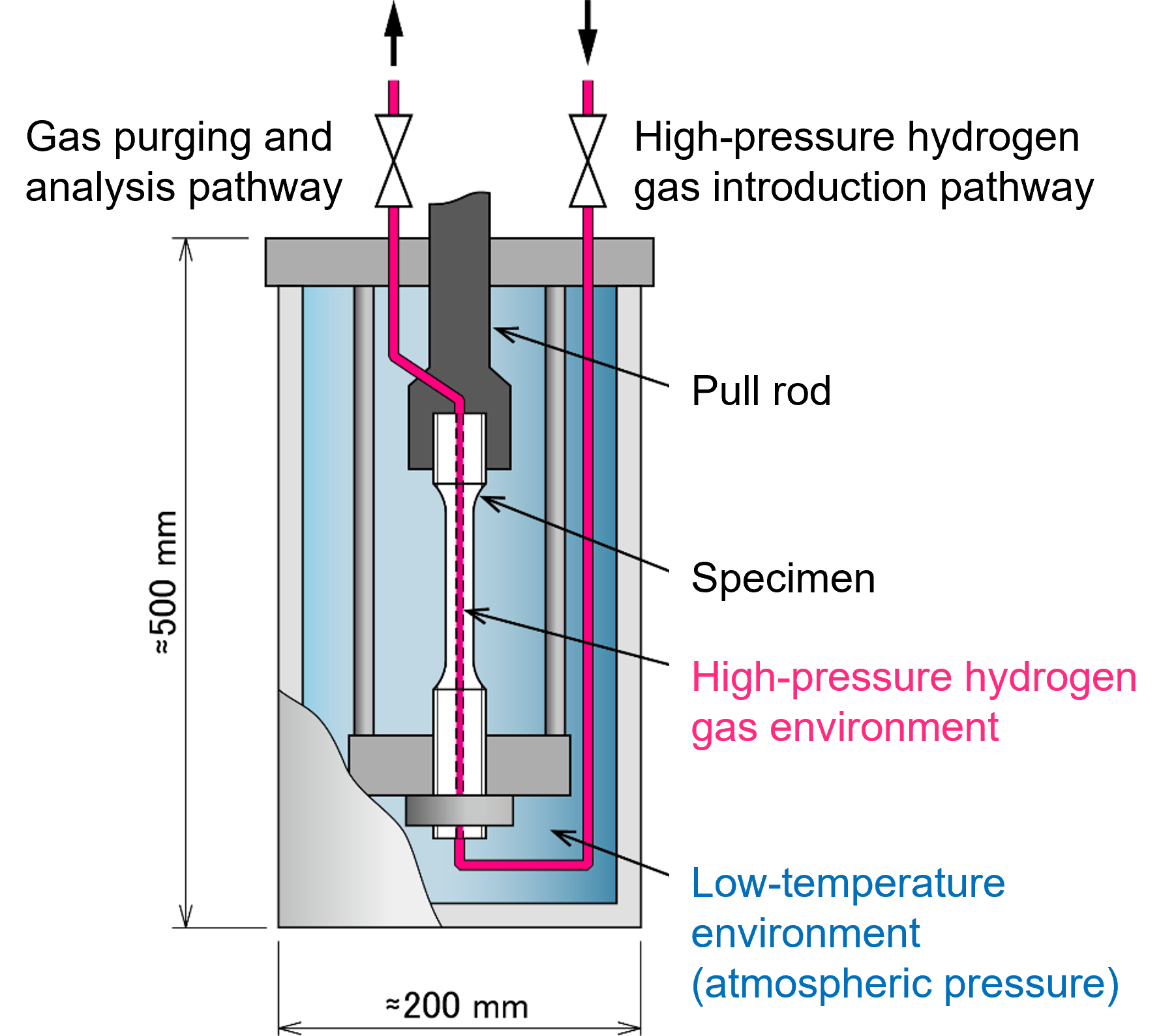
Method for evaluating the susceptibility of materials to the effects of high-pressure gas
within hollow test pieces

Method for evaluating the susceptibility of materials to the effects of high-pressure gas
within hollow test pieces
2. Green Innovation (GI) Fund Project
Hydrogen can be produced from various energy sources and is expected to be used for a wide range of purposes, including power generation, transportation, and industry, making it an essential secondary energy source for achieving carbon neutrality. In order to promote the social implementation of hydrogen, it is necessary to simultaneously reduce the cost of hydrogen supply by increasing the size of supply facilities and creating large-scale demand for hydrogen. To reduce the cost of hydrogen supply, it is necessary to reduce the facility and operating costs of each component through larger size and higher efficiency compared to existing technologies in the hydrogen supply chain demonstration project, etc. However, in the case of liquefied hydrogen infrastructure, materials that can be used in extreme conditions such as cryogenic temperatures and hydrogen environments are limited, so there are currently high technological hurdles in the way of cost-effective enlargement. Based on the R&D and social implementation plan for hydrogen formulated by the Ministry of Economy, Trade and Industry (METI), NIMS proposed an issue to the “Construction of a Large-Scale Hydrogen Supply Chain” project, a GI Fund project promoted by NEDO, and the proposal was adopted in FY2021. This project aims to establish test facilities to evaluate mechanical properties under cryogenic hydrogen environment, build a materials database using the facilities, and promote the utilization of the database in order to contribute to the review of regulations on materials for liquefied hydrogen-related equipment and to strengthen technical development capabilities.
Project name: Establishment of a large-scale hydrogen supply chain / development of a materials evaluation infrastructure to support research and development of liquefied hydrogen-related equipment
Project period: November 2021 - FY2025 (planned)
In this project, in order to appropriately incorporate the needs of industry in the development of evaluation test facilities and the construction of a materials database, a “Committee for the Evaluation and Development of Liquefied Hydrogen Related Materials” consisting of experts from related organizations, including the organizations implementing the “Establishment of a Large-Scale Hydrogen Supply Chain” project, will be organized, and from the initial stage of implementation, the committee will develop the specifications for test facilities and ancillary facilities. The committee has been discussing detailed specifications for the evaluation infrastructure, including specifications for testing facilities and ancillary facilities, selection of materials to be evaluated, and specifications for database formats, since the early stages of implementation.
Related files and links
- Outline of the GI Fund Project / Large-scale Hydrogen Supply Chain Establishment
- 2025.07.22 NIMS Now Vol.25 No.3 Mastering Hydrogen -How far have we come in harnessing hydrogen energy?-
- 2024.10.28 Press Release
“New Facility for Evaluating Hydrogen-Compatible Materials Now Complete -Expanded Temperature and Pressure Ranges Critical for Advancing the Hydrogen Economy-"
Member
Unit Leader
Unit Member
Member of Fatigue Data SheetMember of Corrosion Data Sheet
- KATAYAMA, Hideki
- YOSHIMURA, Keiko
Member of Extreme Environment Materials Data Sheet
- KOMATSU, Masayuki
- TERADA, Hayato
- OYOSHI, Keiji
- ABE, Tomomi
Member of GI Project
- SHIMIZU, Tadashi
- HIBI, Masaaki
- YURI, Tetsumi
- OHTSUKA, Hideyuki
- SAKAI, Shuji
- ITO, Yuzuru
- FUKUDA, Mana
- SUGAYA, Kikuyo
- URISAKA, Etsuko
Support for other external funds
- KONNO, Takeshi
- UCHINO, Takashi
CONTACT:
Extreme Environment Materials Data Unit
Sengen 1-2-1, Tsukuba, Ibaraki, 305-0047 Japan
E-mail : ONO.Yoshinori=nims.go.jp (Please change "=" to "@")






